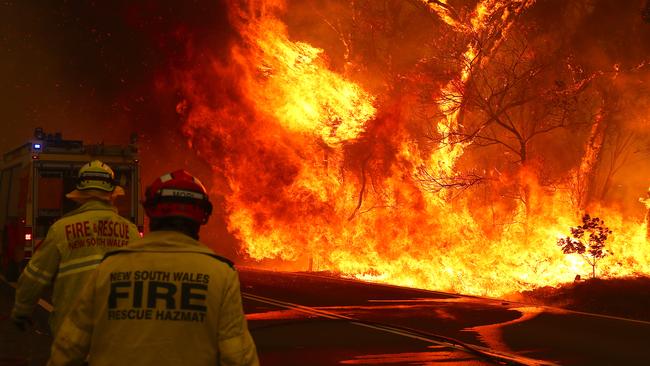Climate change and dryness ‘fuelled bushfires’
The Black Summer bushfires inquiry report has concluded that catastrophic conditions were caused in large part by climate change and greenhouse gas emissions.

A highly anticipated inquiry report into the Black Summer bushfires has concluded that catastrophic conditions were caused in large part by climate change and greenhouse gas emissions, but factors such as dry fuel loads were also significant in contributing to the infernos.
The independent review, commissioned in January while the fires still burned across the state, was released after cabinet endorsed all 76 recommendations.
The impact of the fires was felt across the country, but particularly in NSW where 26 people died and 2476 homes were destroyed. Those who perished included firefighters, and the report singled out “varying standards” of protection afforded by their trucks, masks and other personal protective equipment.
Mental health and well-being matters also featured prominently in the inquiry report, as did hazard reduction burning, which are set to be conducted closer to homes and at-risk communities.
Further research into climate patterns, technological innovation and the use of grazing in national parks also formed part of the recommendations and findings.
Led by former NSW police deputy commissioner Dave Owens and former chief scientist Mary O’Kane, the inquiry distilled the fires’ causes to a range of prominent factors. Among these were the extreme dryness of some forested regions, the over-stretched resources of the NSW Rural Fire Service, and the inability of firefighters to reach ignition sources quickly enough in some remote locations.
Climate change was also singled out early in the report, which runs to more than 400 pages.
“It is clear we should expect fire seasons like 2019-20 or potentially worse, to happen again,” the report noted. “Climate change as a result of increased greenhouse gas emissions clearly played a role in conditions that led up to the fires and in the unrelenting conditions that supported the fires to spread, but climate change does not explain everything that happened.”
While NSW, like the rest of the country, is technically in winter, the fire season has begun for 2020. Several local government areas are on alert, and funding measures have been brought forward to mobilise hazard reduction efforts.
“We are prepared for the next season. What we’re not prepared for, of course, is the unknown,” said NSW Emergency Services Minister David Elliott.
Other strategies recommended include compulsory land clearing measures, night-time water bombing of fires and the trial use of water-bombing aircraft as a first response for fire suppression, to reduce the intensity of the blazes.
The report argues strongly for innovative solutions, such as unmanned aircraft and vehicles, as a measure to save more lives.




To join the conversation, please log in. Don't have an account? Register
Join the conversation, you are commenting as Logout